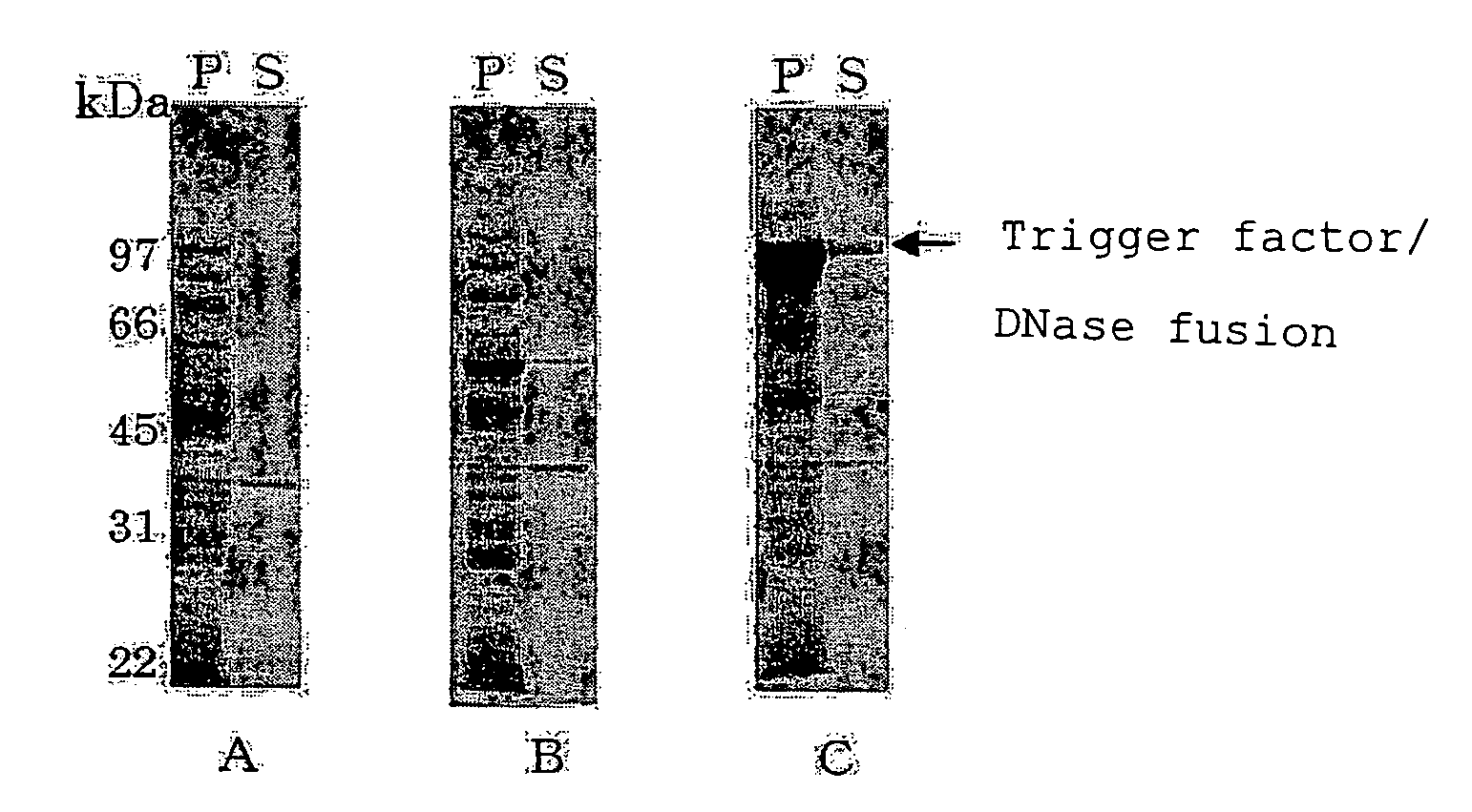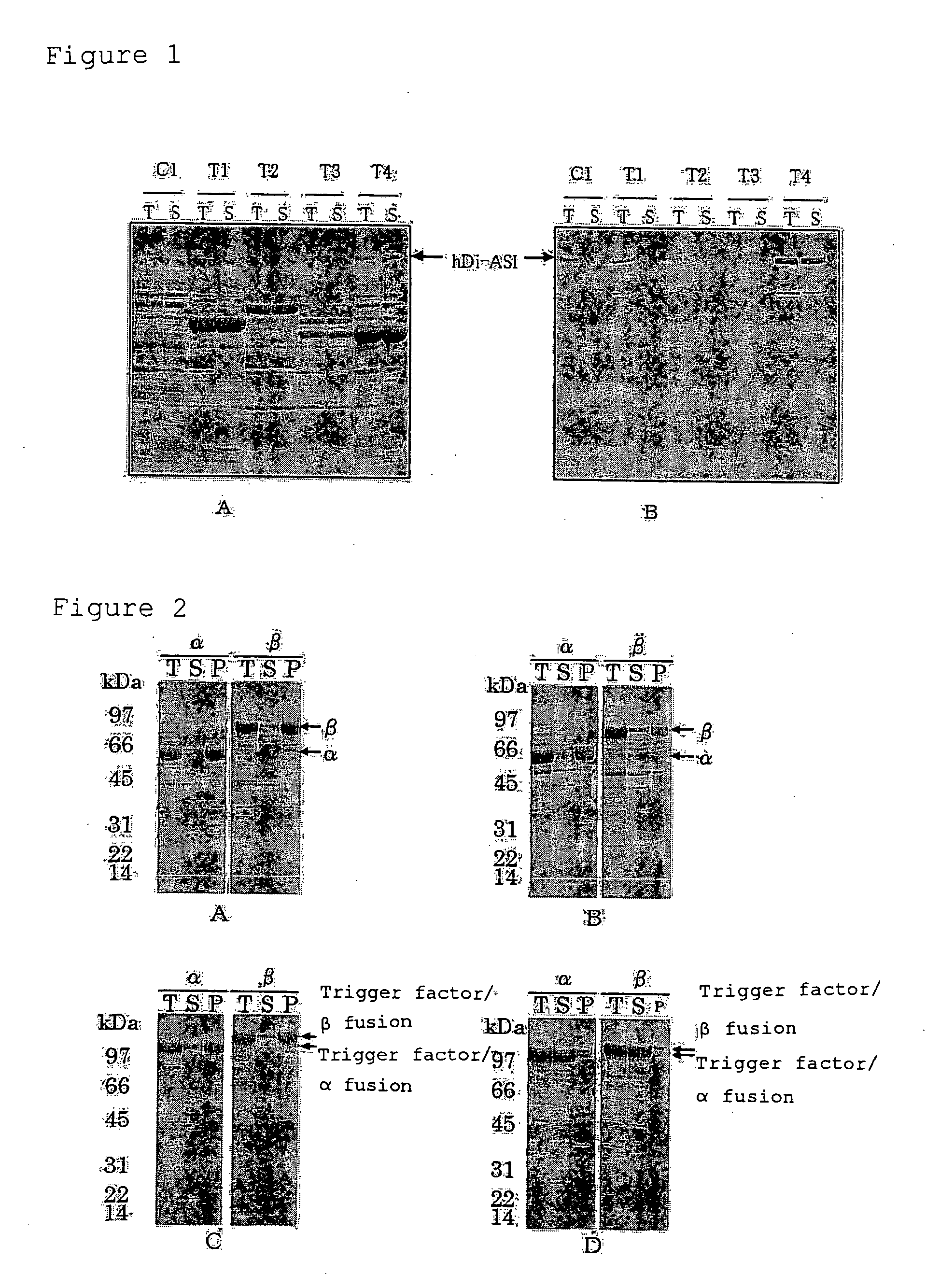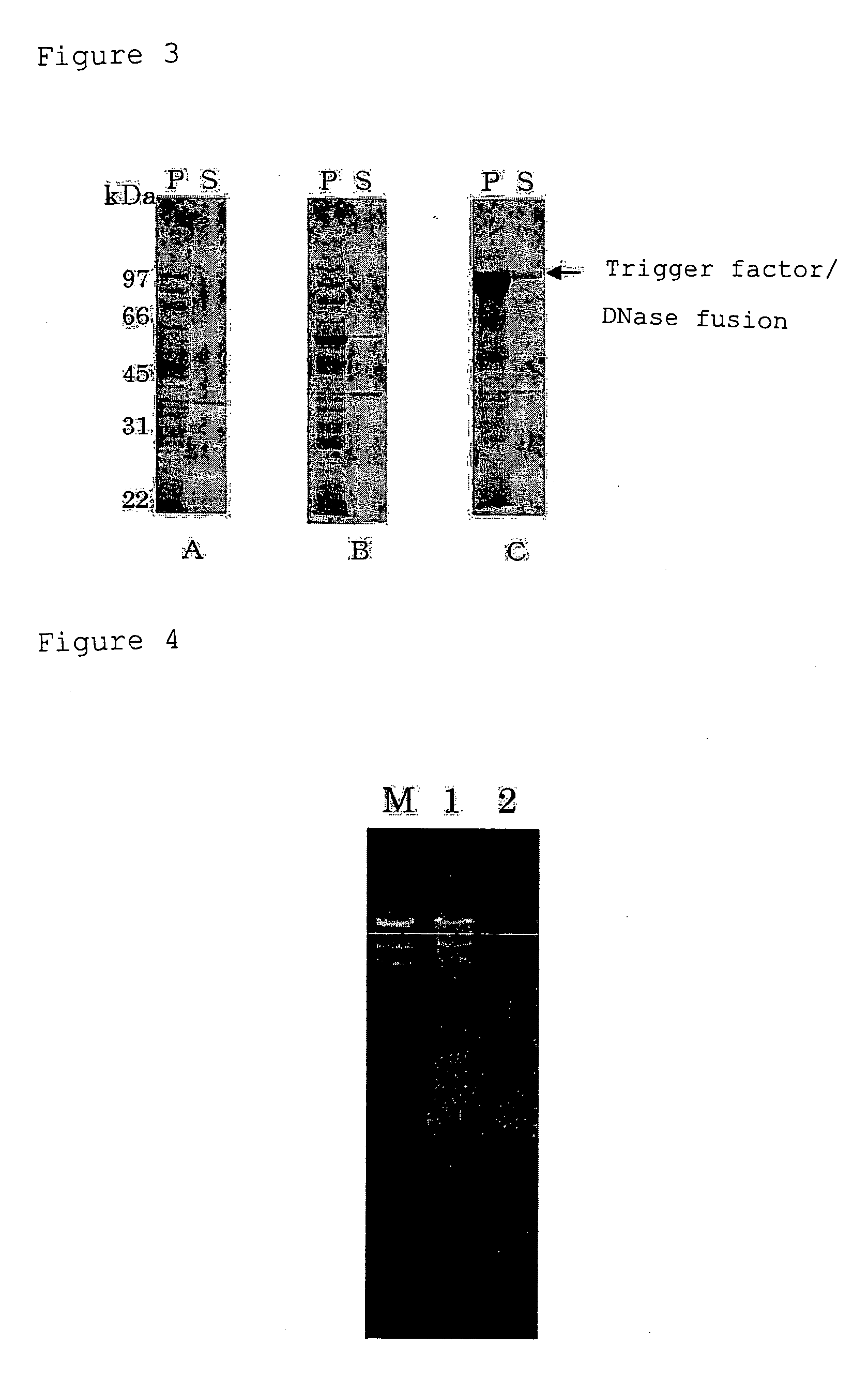Process For Producing Polypeptide
a polypeptide and polypeptide technology, applied in the field of polypeptide production, can solve the problems of unsatisfactory yield, inability to regenerate, and abnormal protein having a different tertiary structure obtained
- Summary
- Abstract
- Description
- Claims
- Application Information
AI Technical Summary
Benefits of technology
Problems solved by technology
Method used
Image
Examples
example 1
Examination of Expression of hDi-ASI by Co-Expression with Chaperone
[0113](1) Construction of Expression Vector
[0114]An expression vector was constructed as follows in order to express a polypeptide consisting of PAZ+ RNase III domain of human Dicer (679th to 1924th from the N terminus of the amino acid sequence of human Dicer).
[0115]First, synthetic primers 5 and 6 (SEQ ID NOS:4 and 5) were synthesized using a DNA synthesizer based on the nucleotide sequence available to the public under Genbank Acc No. AB028449, and purified according to a conventional method. The synthetic primer 5 is a synthetic DNA that has a recognition sequence for a restriction enzyme KpnI at nucleotide 9 to nucleotide 14, and a nucleotide sequence corresponding to amino acid 679 to amino acid 685 in the amino acid sequence of human Dicer (SEQ ID NO:3) at nucleotide 16 to nucleotide 36. The synthetic primer 6 has a recognition sequence for a restriction enzyme HindIII at nucleotide 9 to nucleotide 14 and a n...
example 2
Examination of Expression of RTaseα and RTaseβ
[0142]Expression of a protein of interest alone, co-expression of a protein of interest with Trigger Factor and expression of a fusion protein of a protein of interest and Trigger Factor were compared with each other as follows. Two expression systems, i.e., a system in which a cold shock vector is used (cold shock expression system) and an expression system in which a combination of T7 promoter and T7 RNA polymerase is used (T7 promoter expression system) were used for expression of a fusion protein.
[0143](1) Construction of Plasmid Vectors
[0144]Synthetic primers TFN and TFCP (SEQ ID NOS:13 and 14) were synthesized using a DNA synthesizer based on the Escherichia coli Trigger Factor gene sequence (Genbank Acc. No. NC—000913, position 454357 to position 455655), and purified according to a conventional method.
[0145]The synthetic primer TFN is a synthetic DNA that has a nucleotide sequence encoding the 1st to 9th amino acids from the N te...
example 3
Expression of DNase
[0174](1) Construction of Vector for Expressing DNase
[0175]pCold08-End1 (FERM BP-10313) (deposited on Feb. 16, 2005 (date of original deposit) at International Patent Organism Depositary, National Institute of Advanced Science and Technology, AIST Tsukuba Central 6, 1-1, Higashi 1-chome, Tsukuba-shi, Ibaraki 305-8566, Japan) was used as a plasmid for expressing DNase alone. This plasmid contains a nucleotide sequence encoding a DNase consisting of 254 amino acid residues and is constructed so as to express a fusion protein of 271 amino acid residues in which His-Tag, a recognition sequence for factor Xa and a linker sequence are added to the DNase.
[0176]A plasmid for expressing a fusion protein of Trigger Factor and DNase was constructed as follows.
[0177]First, synthetic primers NUCN and NUCC (SEQ ID NOS:17 and 18) were synthesized using a DNA synthesizer based on the nucleotide sequence of pCold08-End1, and purified according to a conventional method. The synthet...
PUM
| Property | Measurement | Unit |
|---|---|---|
| culture temperature | aaaaa | aaaaa |
| temperature | aaaaa | aaaaa |
| temperature | aaaaa | aaaaa |
Abstract
Description
Claims
Application Information
 Login to View More
Login to View More - R&D
- Intellectual Property
- Life Sciences
- Materials
- Tech Scout
- Unparalleled Data Quality
- Higher Quality Content
- 60% Fewer Hallucinations
Browse by: Latest US Patents, China's latest patents, Technical Efficacy Thesaurus, Application Domain, Technology Topic, Popular Technical Reports.
© 2025 PatSnap. All rights reserved.Legal|Privacy policy|Modern Slavery Act Transparency Statement|Sitemap|About US| Contact US: help@patsnap.com



